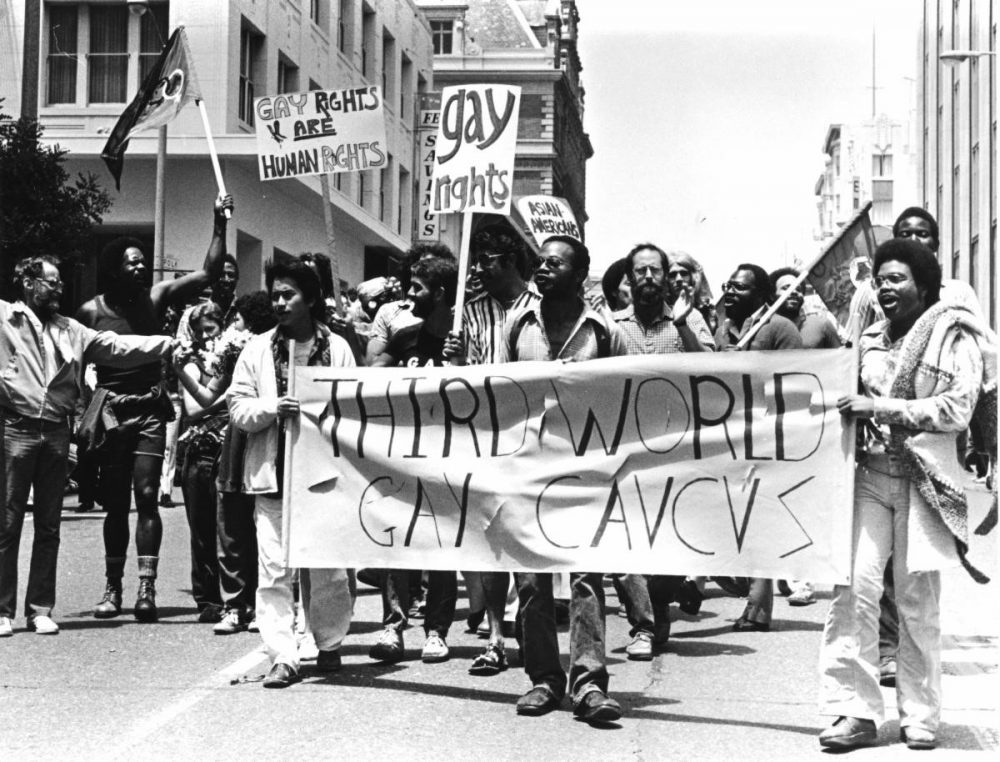Labor of Love: Online Exhibition Explores First Decade of San Francisco Pride, 1970–1980
A new online exhibition by the GLBT Historical Society, with the support of San Francisco Pride, showcases how San Francisco’s LGBTQ community in the 1970s forged the internationally renowned annual celebration that would come to be known as the San Francisco Lesbian, Gay, Bisexual and Transgender Pride Parade. “Labor of Love: The Birth of San Francisco Pride, 1970–1980” opens on the society’s website at glbthistory.org/labor-of-love on Monday, June 15.
On June 27, 1970, a small group marched down Polk Street, and the following day staged a “gay-in” picnic in Golden Gate Park. Over the course of the decade, Pride became an annual San Francisco event, growing by leaps and bounds. Initially referred to as Christopher Street West — to commemorate the 1969 Stonewall Riot on that street in New York City — and then as Gay Freedom Day, Pride drew some 250,000 participants and spectators in 1980.
“Labor of Love” revisits the first ten years of San Francisco Pride using historic photographs, ephemera, artifacts, and film and sound recordings from the archives of the GLBT Historical Society and from community members. The exhibition explores the goals, the controversies, the hard work, the desires and the sometimes-competing spirits of struggle and celebration that laid the foundation for one of the city’s best-known public festivals.
The exhibition is co-curated by Gerard Koskovich, a public historian and rare book dealer; Don Romesburg, professor of gender and women’s studies at Sonoma State University; and Amy Sueyoshi, dean of the College of Ethnic Studies at San Francisco State University. They emphasize that Pride has traditionally deployed both frivolity and protest to promote a positive cultural shift in how society views LGBTQ people.
The exhibition is organized around four themes. “Why Pride?” considers how organizers and community members explained the purpose of the annual gathering. “The Work of Pride” explores the ever-increasing commitment to planning, fundraising, volunteer support and governance that the event required. “Pride Fights” grapples with the debates over what Pride should be, who should be included, who should make the decisions and how they should be made. Finally, “Big Gay Family” highlights how the creation of San Francisco Pride brought diverse people into a collective, yet often contested kinship.
The interactive final section of the show, “Pride: From Past to Future,” invites visitors to reflect on the history, then look ahead by submitting their responses to two questions: “How will the future of Pride be shaped? How should it be shaped?” The answers will be posted in the online gallery to spark an ongoing dialog about the heritage of Pride.
“Labor of Love” opens Monday, June 15 on the GLBT Historical Society’s website at glbthistory.org/labor-of-love. The exhibition will also be installed as a physical exhibition at the GLBT Historical Society Museum at 4127 18th Street in San Francisco’s Castro district at a future date.
For more information, visit the GLBT Historical Society website at www.glbthistory.org.
